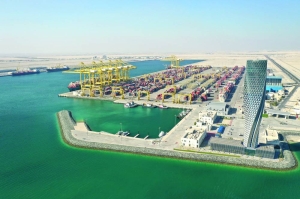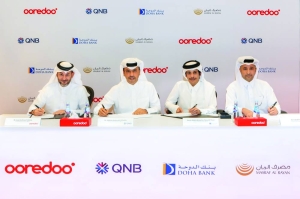Transshipment volumes lift container traffic in Qatar ports in July; cargoes breach 1mn levels in January-July


Qatar’s ports saw a 46% increase in container handling in a “record-breaking” July on an annualised basis, primarily due to a 132% increase in transshipments, Mwani Qatar said on X.
Qatar’s Hamad Port reported a stupendous 132% year-on-year jump in transshipment volumes in July, helping the country carve a special place in the regional maritime industry, according to official data.
The country’s ports saw a 46% increase in container handling in a “record-breaking” July on an annualised basis, primarily due to a 132% increase in transshipments, Mwani Qatar said in its social media handle X.
This growth was accompanied by a rise in handling volumes of livestock and RORO (vehicles) as Qatar’s maritime sector saw more vessels calling on Hamad, Doha and Al Ruwais ports in July 2024 compared with the previous-year period, according to the data from Mwani Qatar.
The positive momentum in the ports reflects the optimistic outlook, especially for the country’s non-energy private sector, as indicated by the latest purchasing managers’ index of the Qatar Financial Centre.
The number of ships calling on Qatar’s three ports stood at 235 in July 2024, which saw a 3.98% increase year-on-year but was down 2.89% on a monthly basis.
Hamad Port, whose strategic geographical location offers opportunities to create cargo movement towards the upper Gulf, supporting countries such as Kuwait and Iraq and south towards Oman, saw as many as 132 vessels call (excluding military) in the review period. A total of 1,558 ships had called on the three ports during the first seven months of this year.
The container handling through the three ports stood at 146,752 TEUs (twenty-foot equivalent units), which saw 45.53 and 1.29% year-on-year and month-on-month jump respectively in July this year.
The container terminals have been designed to address the increasing trade volume, enhance ease of doing business and support economic diversification, which is one of the most vital goals of the Qatar National Vision 2030.
Hamad Port, which is the largest eco-friendly project in the region and internationally recognised as one of the largest green ports in the world, saw 148,479 TEUs this July. The container volume at the three ports totalled 853,375 TEUs during January-July 2024.
The three ports were seen handling 20,302 livestock in July 2024, which zoomed 271.29% on an annualised but shrank 65.66% on monthly basis. As many as 378,503 livestock heads were handled by three ports during the first seven months of this year.
The three ports handled as many as 12,214 RORO in July 2024, which registered 102.08% growth year-on-year while it declined 22.1% month-on-month in July 2024. Hamad Port alone handled 12,192 units this July. A total of 68,158 RORO units were handled by three ports during January-July 2024.
Qatar’s automobile sector has been witnessing stronger sales, especially in heavy equipment, private motorcycles and private vehicles, according to the latest data of the National Planning Council.
The general and bulk cargo handled through the three ports fell 20.85% on an annualised basis to 131,982 freight tonnes in July 2024. However, it was seen surging 131.82% month-on-month.
Hamad Port – whose multi-use terminal is designed to serve the supply chains for the RORO, grains and livestock – handled 98,922 freight tonnes of breakbulk in July 2024. A total of 1.06mn freight tonnes of general and bulk cargoes were handled by the three ports during January-July 2024.
The building materials traffic through the three ports stood at 22,204 tonnes this July, which declined 37.09% and 1.33% year-on-year and month-on-month respectively. As much as 193,362 tonnes of building materials were handled by Hamad, Doha and Al Ruwais ports during January-July this year.





